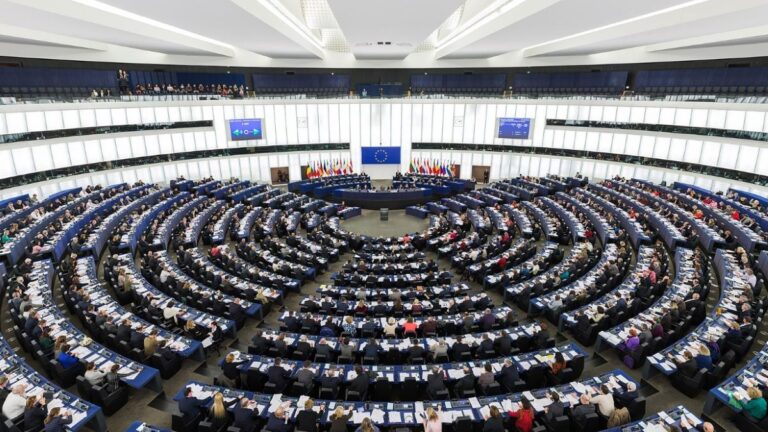Around 373 million citizens in the 27 member states of the European Union will be able to vote in the European Parliament elections from 6 to 9 June. Here’s everything you need to know about voting.
Table of Contents
What is the European Parliament
The European Parliament (EP) is the only directly elected body of the EU, representing the citizens of its member states.
Its main functions include negotiating EU laws with the governments of the member states, which are represented by the European Council. The European Parliament also approves the EU budget and votes on international agreements and enlargements of the bloc.
The European Parliament has important oversight responsibilities, including the power to approve or reject the appointment of the President of the European Commission – a position currently held by Germany’s Ursula von der Leyen – and commissioners.
Unlike national parliaments, the European Parliament does not have the right to propose laws but can only negotiate those proposed by the executive European Commission.
The EP is made up of 720 members (MEPs) elected every five years. MEPs then elect their president for a two-and-a-half-year term. The outgoing president is Roberta Metsola of Malta.
Who can vote in the European elections?
In 21 Member States, people aged 18 and over can vote. In Belgium, Germany, Austria and Malta, the minimum voting age is 16. While in Greece, people who turn 17 during an election year can vote, and in Hungary, married people can vote regardless of age.
Citizens of the European Union can vote in their country of origin or from abroad. Voting from abroad is permitted in all member states except the Czech Republic, Ireland, Malta and Slovakia. In Bulgaria and Italy this right only applies to those living within the EU.
Citizens living in another EU country can choose to vote for candidates from their country of origin or their country of residence. The voter must choose which country to vote for, but it is not legal to vote in both countries at the same time.
How to vote in the European elections?
In some Member States voters can only choose closed lists that do not allow the order of preferred candidates to be changed, while in others they can select individual candidates in a preferential system.
Depending on national laws, some voters abroad may vote at their national embassies, by post or electronically.
Who can run in the European elections
Voters can choose between individual candidates or political party delegates, depending on the country. Once elected, the politicians of each nation will flow into the European groups that form the Parliament, based on their political orientations.
Some member states, including Germany, only allow candidates from political parties or political associations to run in the European elections.
Elected officials cannot hold positions in national governments or other political bodies such as, among others, the European Commission, the Court of Justice or the Court of Auditors. All candidates must be EU citizens.
European elections, 2024 electoral forecasts
Six out of ten European citizens have expressed their interest in voting in these elections, according to a survey conducted by the statistics agency Eurostat last April.
A projection by the poll aggregator Europe Elects predicts that by the end of May, of the 720 seats available in the European Parliament, the centre-right European People’s Party (EPP) group would win 180, the centre-left progressive Alliance of Socialists and Democrats (S&D) 138, and the liberal and centrist Renew Europe (RE) 86.
The European Conservatives and Reformists (ECR) would gain 75 seats while Identity and Democracy (ID) would drop to 68 from 84 in April, after the expulsion of the far-right German Alternative for Germany (AfD). Other smaller parties would get the remaining 173 seats, according to Europe Elects data.
The 2019 election results
Previous elections marked a fundamental shift in politics as the traditional centre-right and centre-left blocs lost ground to smaller parties.
The EPP and the centre-left Progressive Alliance of Socialists and Democrats (S&D) saw their combined seat count fall by 76, losing their long-held majority.
This has necessitated broader coalition building, strengthening centrist and pro-EU groups such as Renew Europe and the Greens/EFA.
Voter turnout reached its highest level in 20 years at 50.66%, an increase of 8% compared to 2014, indicating growing public interest in issues such as climate change, migration and economic inequality.
Read also: 2024 is a year of decisive elections: where to look and what to expect












